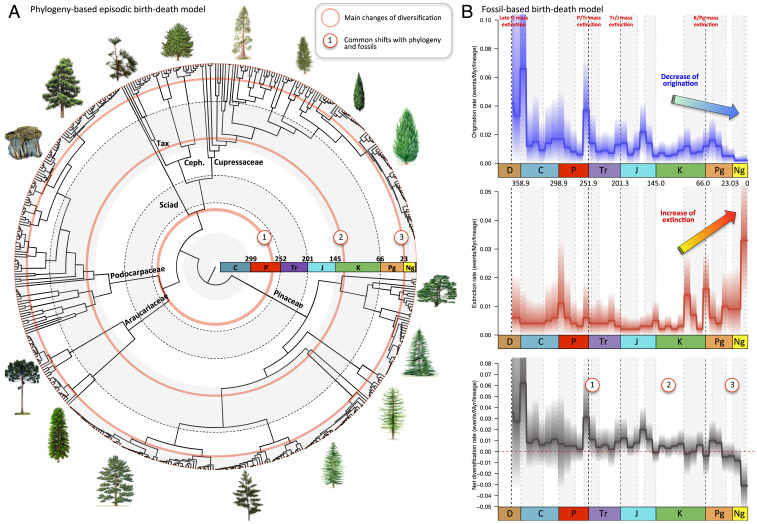Fig. 2.
Global diversification of conifers inferred from a molecular phylogeny and the fossil record. (A) Time-calibrated phylogeny of conifers and significant shifts in diversification rates (shown by red circles) inferred with an episodic birth–death model (SI Appendix, Table S1). Six shifts of diversification rates were identified: two shifts occurred at the end of the Permian (a single red circle for the two), one occurred during the Cretaceous terrestrial revolution (rise of angiosperms), one occurred at the end of the Oligocene, and two shifts were found in the Pliocene and Pleistocene (a single red circle for the two). (B) Rates of origination (blue), extinction (red), and net diversification rates (black; the difference between origination and extinction) inferred from a fossil-based analysis at the genus level, including Cordaitales, under the Bayesian approach implemented in PyRate (SI Appendix, Fig. S3 shows analyses without Cordaitales). Solid lines indicate mean posterior rates, and the shaded areas show 95% credibility intervals. Taken together, the phylogeny-based (A) and fossil-based (B) diversifications show 1) that diversification of conifers was low and punctuated by periods of extinction, 2) that the increase in extinction initiated in the Middle Cretaceous, and 3) the Cenozoic decline of conifers. The vertical dashed lines indicate the boundaries between geological boundaries and major mass extinction events. C, Carboniferous; Ceph., Cephalotaxaceae; D, Devonian; J, Jurassic; K, Cretaceous; Ng, Neogene; P, Permian; Pg, Paleogene; Sciad., Sciadopityaceae; Tax., Taxaceae; Tr, Triassic.

